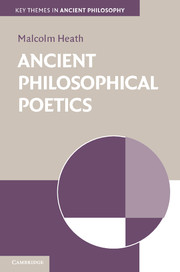Chapter Four - Ways to find truth in falsehood
Published online by Cambridge University Press: 05 December 2012
Summary
Later Platonists came to hold a view of poetry – or, more precisely, of Homer and some other ancient poets – radically different from the one which Plato’s Republic seems to offer us. The new consensus is exemplified by Porphyry (in the third century ad), who regards Homer as a profound philosopher (§4.7). This chapter investigates the background to the transformation of Platonist poetics by exploring various ways in which the relationship between poetry and truth was conceived. A preliminary outline may be helpful, since the path will be circuitous and wide-ranging. We begin with Plutarch (around the end of the first century ad), whose approach to poetry in education is motivated by a sense of the dangers of poetry inherited from the Republic (§4.1). We then consider three other approaches which Plutarch mentions and rejects: the alleged Epicurean repudiation of poetry (§4.2); the long-standing tradition of allegorical interpretation (§4.3); and the Stoic approach to myth (§4.4). The Stoics made a distinction between myth in poetry and religious myth; in interpreting the latter they emphasised symbolic representation, and showed respect for non-Greek religious traditions. This constellation of ideas was widely shared: we can trace its influence in Plutarch’s treatise On Isis and Osiris (§4.5), and in Greek debates about images of the gods (§4.6). Against this background, it is easy to define the nature of the transition that occurred between Plutarch and Porphyry: Homer crossed the boundary line between poetic and religious myth, and thus became eligible for a different kind of interpretation.
- Type
- Chapter
- Information
- Ancient Philosophical Poetics , pp. 104 - 137Publisher: Cambridge University PressPrint publication year: 2012



